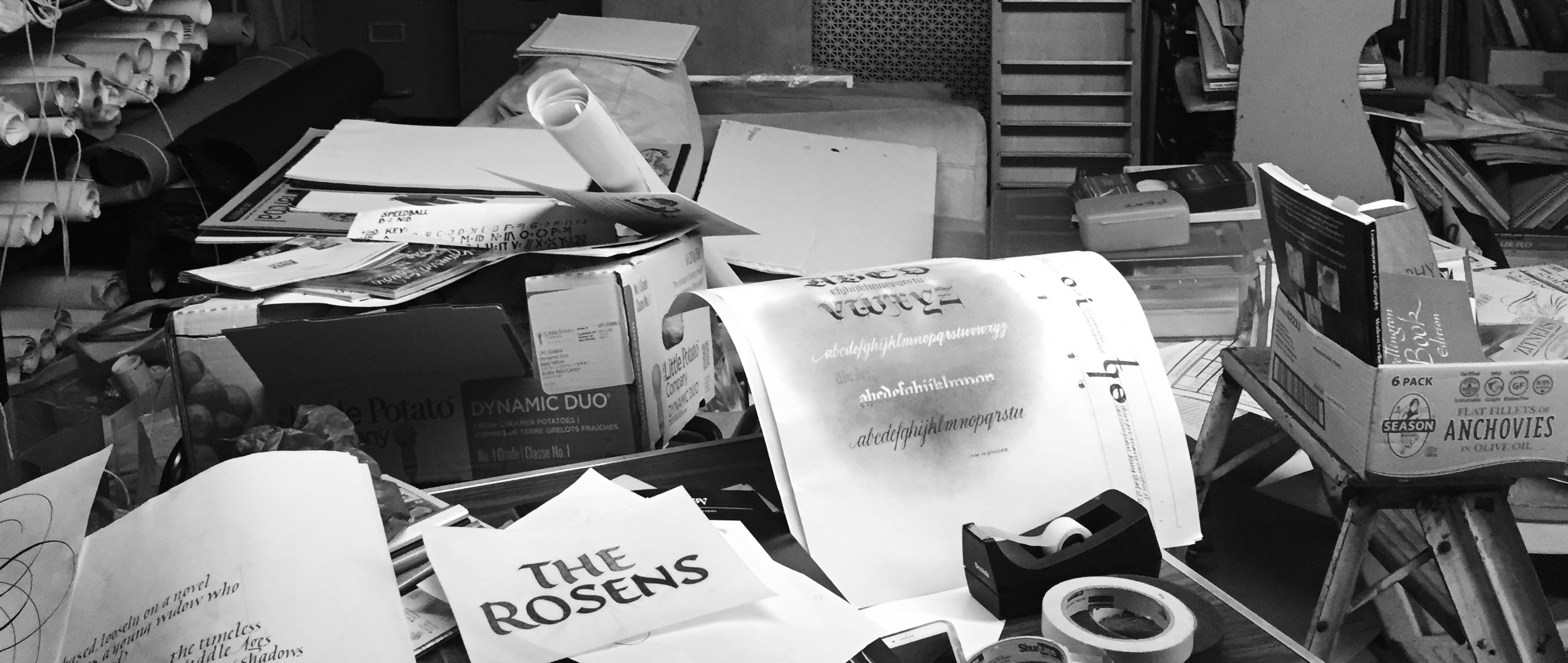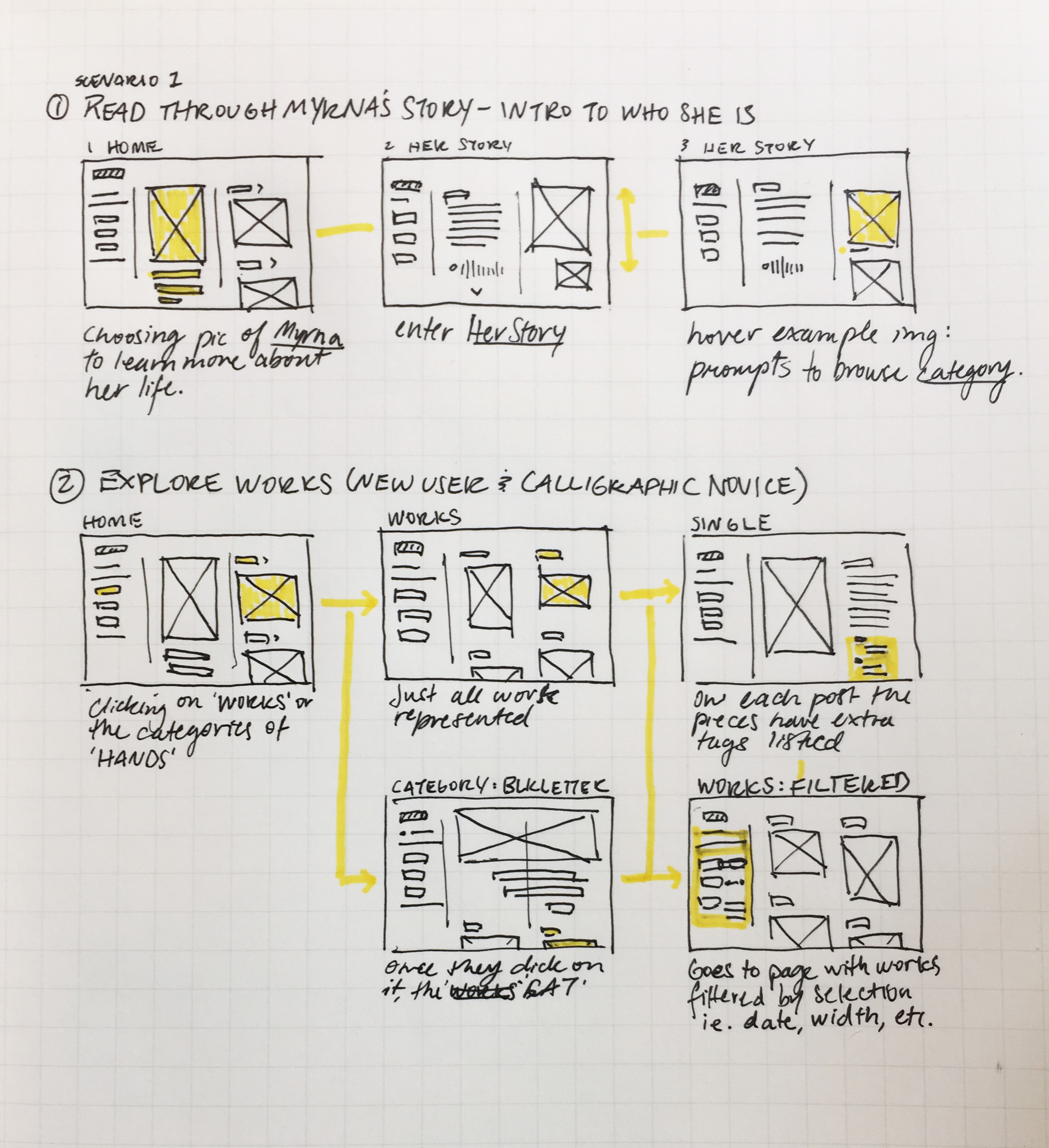Capturing a Legacy
Myrna Rosen has been the beloved calligraphy professor of Carnegie Mellon’s School of Design for 22 years now. She has instructed hundreds of students in the art form of calligraphy, enriching her lectures with with samples of her calligraphy, as well as her students’ and professor, Arnold Bank’s work. Though Myrna is past the age of retirement, her passion for passing on the art of calligraphy has kept her in the classroom semester after semester. Yet, over the many years of Myrna’s remarkable calligraphic work, she has never pursued an organized effort to document or catalog her own notable works.
The goal of documenting and cataloging the work of Myrna Rosen is to capture her notable contributions to the world of calligraphy, and document the narrative of Myrna’s work as a calligrapher.
Not only should the work itself be documented, but also the way in which Myrna talks about the calligraphy should be recorded. In doing this, I also aim to make this product of documentation an accessible guide for students to gain exposure to a master’s calligraphy.
Where to Begin
Before this project I had never approached a project of this nature. I didn’t know anything about archiving or preserving work, and I was a novice calligrapher myself. I met with our campus library archival staff as well as a oral historian to get some insight into the big “Dos and Don’ts” of such a task. This open research, leveraging the talent on campus was an invaluable start to the project, as I began to see more potential for the whole project.

I began by just spending time with Myrna in her own environment- her home and studio. She showed me work and talked about how she began as a calligrapher, and I naturally began recording these conversations as my own notes. However, I soon found myself laughing and listening intently when I resisted these recordings. So much of Myrna’s personality shown through the medium that I began to consider also documenting Myrna’s story as a calligrapher, mother, and teacher.

Designing the Platform
As I continued to meet with Myrna, talk about her work and her life, I also began sketching a platform that might host this content. One visit to Myrna’s basement studio and it was clear to me that an archiving job would not be completed in two semesters; So it was important to me that this platform, a website, would be friendly to the “archivist” coming after me.
The website needed to accomplish three things: display the collection of Myrna’s work, provide handles to search and sort this work, and tell Myrna’s personal story.
For the first part, Myrna and I are making a small dent in her work each time we met- we talk about each piece, I record her commentary on the work, then I take the work and photographically document it. This archival of Myrna’s work also stands to educate the casual digital audience on the history of type through explaining categories and classifications of calligraphic type. To accomplish this through the website I am designing that a search/filter might educate through its interaction.

Finally, I am slowly sifting thorough the recordings to collect a chronological story of Myrna’s path to becoming a calligrapher. I focus on her challenges of being all mother, wife, teacher, and calligrapher. I also use this as an opportunity to allow Myrna to expound on her own education from the famous calligrapher, Arnold Bank.
















